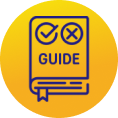Let AutoMate guide you through the claims process hassle-free.
AutoMate was developed to help those who have been in an auto accident navigate the claims process by providing a comprehensive step-by-step guide. AutoMate will equip you with essential information, useful tools and valuable resources which will empower you to confidently handle your auto claim and maximize your settlement.
AutoMate is independent, ad free, and is not affiliated with any insurance company. Using AutoMate can save you hours of time searching the internet for answers, and following just one tip could save you hundreds or even thousands of dollars!

This comprehensive guide will equip you with knowledge and resources which will empower you to confidently navigate every stage of the claims process and maximize your settlement.

Here you will find links to auto appraisers, resources to help you with a diminished value or total loss claim, help understanding CCC One reports, links to insurance commissioners and more.

Here you will find resources which will help you understand how diminished value, loss of use and other methods can be used to maximize your settlement and get what you deserve.

Learn how to choose the best insurance company for you, factors that affect your rates, how to read your auto policy, how an accident can affect your rates, insurance definitions, and more.

Learn what factors to consider when selecting a body shop for your car repairs. Locate reputable body shops near you to ensure your vehicle receives high-quality service.

Be informed about the laws governing auto claims in your state. Here you will find state-by-state references to the statute of limitations, diminished value, loss of use, total loss, the use of OEM parts, and more.
As soon as possible after the accident, document, gather, and preserve all information about your accident.
When a collision occurs, it’s important to have the police involved because it’s necessary to establish fault.
Arranging for a rental car through the at-fault driver's insurance company can present challenges...
When looking for a body shop to repair your car, many people assume they must have their car repaired at the shop
In this article and on other areas of this site, the main focus is on handling and resolving your auto claim.
Yes. You are allowed to have your car repaired by the shop of your choice.
Yes, you have the right to request your insurance company use original equipment manufactured parts rather than aftermarket parts to repair your vehicle. If the insurance company deems these costs unreasonable, you may have to pay the extra cost.
That depends on your situation. If going through the at-fault driver’s insurance company they will need to finish their investigation before accepting liability. You may get better and quicker service going through your own company but you will have a deductible to pay and policy limitations on items such as rental car coverage.
If you have Uninsured Motorist (UM) property damage coverage on your policy, your insurance company will cover the costs of the repairs of your car or replacement if totaled. You will be responsible for the deductible.
Agreeing to pay each other out of pocket and not involve insurance could open you up to major issues later on if it turns out there was more damage than it seemed at the time, or if either of you realize later that you’re injured. But if there was no one else involved in the incident and the cost of the damage is close to your deductible amount, it may not be worth filing a claim. That's because insurance companies check your claims history in order to set rates, and drivers with more claims pay more for insurance.
The information provided by AutoMate on this site is for general information and is not intended as legal advice for your specific situation. AutoMate makes every attempt to give accurate information regarding local laws, however, laws change periodically and your state laws may vary. Consult an attorney in your state if you have questions about your specific situation.